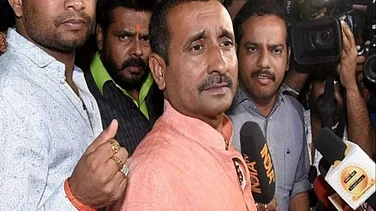India has the most malnourished children in the world. Around 45 per cent of deaths amongst children under the age of five are linked to lack of proper nutrition. Thus, the possibility of achieving the UN’s sustainable development goals at a global level depends largely on India’s progress.
The economic, social and medical impacts of malnutrition are dire and lasting. There is no reason why India, despite being one of the fastest growing economies, still has stunted children. The government has initiated many schemes and policies to reduce hunger and malnutrition in the country, mostly amongst women and children. Poshan Abhiyaan, one of the many interventions to fight malnourishment, provides the right push to end this scourge.
The first 1,000 days of children’s lives (up to the age of two, including nine months in the womb) are the most crucial. If they do not get the right diet, their health and learning ability suffer. They will be less likely to achieve their potential, making the country’s demographic dividend a liability. The learning outcomes of teachers and children in most rural areas are often limited because of low nutrition levels. Thus, malnutrition can also impact the success of interventions in health, education, sports, human resource, education and skill development.
How can we change this state of affairs? We must ensure that every pregnant mother gets an excellent diet during the nine months of childbearing. They must exclusively breastfeed for the first six months. For the next 18 months, both mother and child should get a balanced diet. Since most schools and anganwadis do not have access to fresh fruits and vegetables or the money to buy these for each mid-day meal, they should grow their own produce.
The Kan Sikul, Kan Huan (my school, my farm) project in Lawngtlai, Mizoram, is an in-situ solution to provide a steady supply of nutritious vegetables to children and lactating mothers. We started with the anganwadis and schools with ample open space, and provided seeds, compost and other gardening equipment.
The curriculum was also redesigned to include one hour of SUPW every day. Children had to spend at least 15 minutes in the garden. Although the ultimate objective was boosting the availability of food, they also learned about the dignity of labour.
The programme sought to increase the consumption of local varieties of turmeric and ginger as they are antiseptic in nature, and include more lentils, tomatoes, pumpkin, greens and mustard in the diet. Every child would get a hot vegetable stew with rice at the least. The initiative aimed to strengthen self-help groups (SHGs) in making compost and producing high-yielding variety of seeds in the district itself to reduce dependency on other states and act as a supply chain to schools.
The pilot project was successful and the results were encouraging. Malnourishment was reduced to less than five per cent amongst all age groups. There was availability of organic, fresh, cheap and local seasonal vegetables and fruits throughout the year. Schools became more self-sufficient and reduced their dependence on the market. Students learned about recycling, reuse, waste management and farming. The healthy diet, with adequate macro and micronutrients, helps achieve the objectives of Poshan Abhiyaan.
The programme was then launched throughout the district. The government of India has decided to set up and provide financial assistance for a nutrition garden in each school and anganwadi. The seamless integration of the supply chain, especially compost and seeds, is on the cards. SHGs will be upgraded to technically train schools and make them self-sufficient. Phase III of the project aims to provide livestock and poultry to schools to increase protein content in the diet. It is vital that the gardens be sustainable and regularly maintained.
The project will not only provide children insights into how food is grown, but also recreational work experience in a hands-on environment where they will nurture nature and understand the correlation between work and harvest. It is an educational, healthy and environmentally friendly outdoor activity for children growing up in a world engrossed in gadgets and technology. I hope that the new generation learns to be one with nature, and remains grounded and healthy. That’s the best gift I could give my child—and every other child—in this country.
(The author is deputy commissioner, Lawngtlai, Mizoram)





















